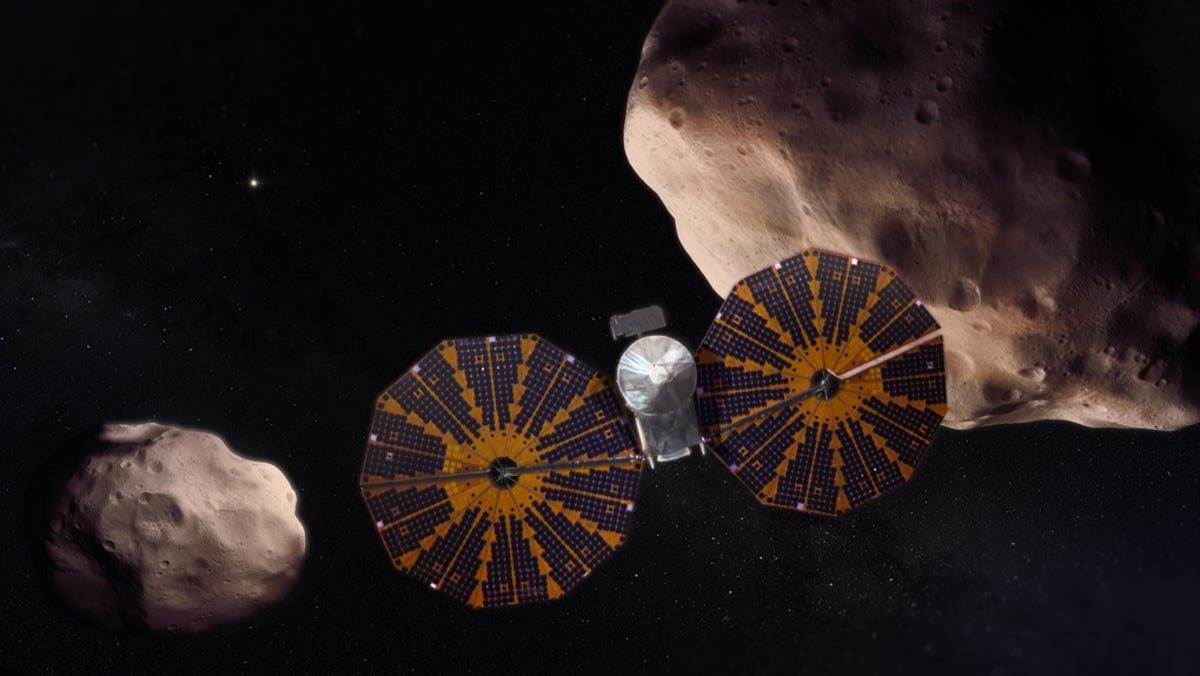NASA's Lucy asteroid spacecraft solar array rescue efforts continuing
Lucy may fly as planned even if the issue is not fixed.

NASA's Lucy mission team is continuing efforts to correct the incomplete deployment of one of the spacecraft's solar arrays as it continues to Jupiter's Trojan asteroids.
The Lucy mission, which launched in October 2021, has two large, circular solar arrays, each spanning 24 feet (7 meters), to provide power for its pioneering voyage. However, one of the arrays failed to fully deploy after launch, posing a problem for the team. An update in January stated that the second array is a little less than 350 degrees deployed, due to an issue with a lanyard suspected to have prevented full deployment, but work to fix the issue has continued.
After a series of tests and measures, the team again commanded the spacecraft to deploy the solar array on May 26, using both primary and backup motors to try to tighten the lanyard and complete deployment.
Related: Meet the 8 asteroids NASA's Lucy spacecraft will visit
"While the array still did not latch, the data indicates that it continued to further deploy and stiffen throughout the attempt," NASA Lucy mission representatives wrote in a June 8 update. "The team has several more opportunities to repeat these deployment commands. While there is no guarantee that additional attempts will latch the array, there is strong evidence that the process is putting the array under more tension, further stabilizing it."
But even if the array does not fully deploy, Lucy may be able to fly as planned. For now, energy is not an issue, as the spacecraft is still relatively near the sun. Lucy carried out a successful trajectory correction maneuver on June 7 as part of preparation for its first Earth gravity assist, scheduled for Oct. 16.
The arrays have been designed to generate enough electricity while out at the orbit of Jupiter — an average distance of 484 million miles (778 million kilometers) from the sun.
Get the Space.com Newsletter
Breaking space news, the latest updates on rocket launches, skywatching events and more!
Jupiter's Trojan asteroids orbit the sun ahead of and behind Jupiter, and no spacecraft has ever visited them. Scientists think these primitive rocks are remnants of the early solar system and could hold important clues about its creation.
Follow us on Twitter @Spacedotcom and on Facebook.
Join our Space Forums to keep talking space on the latest missions, night sky and more! And if you have a news tip, correction or comment, let us know at: community@space.com.

Andrew is a freelance space journalist with a focus on reporting on China's rapidly growing space sector. He began writing for Space.com in 2019 and writes for SpaceNews, IEEE Spectrum, National Geographic, Sky & Telescope, New Scientist and others. Andrew first caught the space bug when, as a youngster, he saw Voyager images of other worlds in our solar system for the first time. Away from space, Andrew enjoys trail running in the forests of Finland. You can follow him on Twitter @AJ_FI.









